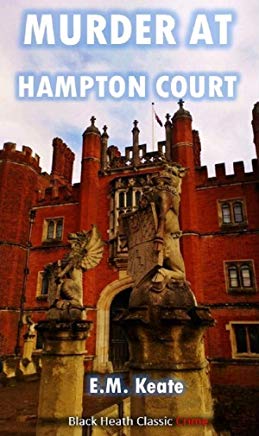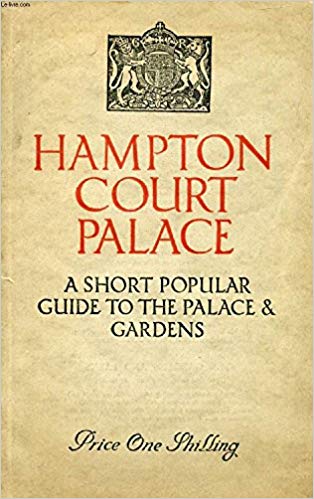Good Reads meta-data is 289 pages rated 3.0 by five litizens
Genre: Krimi, puzzle

Verdict: borderline boring.
Among the aged retainers residing by grace and favour at Hampton Court Palace is old General Hamilton (Ret.) who goes each night to sit by the River Thames and recall the glory days. For reasons never explained he carries a chair with him each night and it is several times mentioned but plays no part in the proceedings. He is good humoured and much liked, living with his sprightly niece who is also well liked.
The equally aged staff, doormen, gardeners, maids, and night-watchmen, are sure there is a ghost in the grounds and this spectre is much invoked but plays no part in the plot. It is fabled the ghost is Samuel Pepys clad in a garish jackanapes coat. There are several references to Pepys but again they are sidebars without advancing the plot. The general’s niece has a colourful coat that provides the mystery.
One night the general is stabbed to death and all are agog. Strangely none of the elderly residents fears that they will be next, though that would surely be the reaction of some among such a group. Instead the protagonists, led by Annabel Sinclair, Lady-in-Waiting (Ret.), leap to the conclusion that — because of the coat — plod will focus on the niece who is completely innocent and to shield her the bulk of the novel consists of a three-ply tissue of lies to mislead the police inspector Margetson.
Quite how the inspector is to solve the crime when everyone lies to him is anyone’s guess. But this is not his first case and he expects lies and works through them with a patience that this reader did not have as I flicked the pages. Indeed he does not solve it, but after 280 pages of lies, the elderly villain commits suicide and leaves and explanatory note.
The setting is unique and fully exploited but because the characterisations are paper-thin and there is no action it hardly matters.
It reads like a puzzle krimi, providing the reader with all the clues to figure out the plot. The acme of this type is certainly Agatha Christie’s ‘The Murder of Roger Ackroyd’ (1926). Any hardened krimi reader will figure it out well before page 280, but the prose limps on.
Hampton Court Palace (1515+ ) has a long history as a grace and favour residence. (The last resident admitted by this means was in 1980, says Sarah Parker in ‘Grace & Favour: The Hampton Court Palace Community 1750-1950’ (2005), p. 126. Those in residence remained until 2009 when the last left. Grace and favour is extended by the monarch to those who have rendered past services, and include widows and dependents of such servants. Military officers and court officials (including retired ladies in waiting) are among those so favoured. By the way, none of this is explained in the novel, but derives from Wikipedia.
Edith Keate (1867-1945) was a civil servant who researched and wrote a ‘Guide to Hampton Court Palace’ and other official works about public places.

She penned five other krimis but one is enough for me for the moment. It has been re-issued in the Black Heath Classic Crime series rendered for Kindle. It seem odd that Cardinal Wolsey who built it is never mentioned.
By the way she is E. M. Keate though the Amazon listing has her as M. E. Keate.
Skip to content
